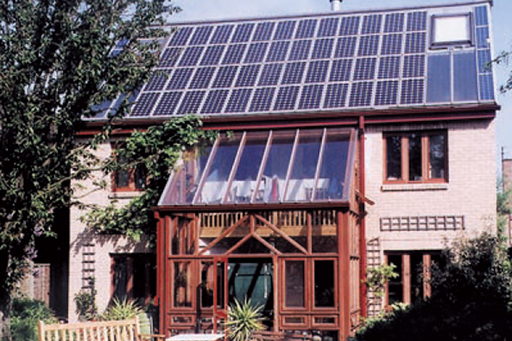4 PV systems for houses
In most parts of the ‘developed’ world, grid electricity is easily accessible as a convenient backup to PV or other fluctuating renewable energy supplies. The grid can absorb PV power that is surplus to current needs (say, on sunny summer afternoons), making it available for use by other customers and reducing the amount that has to be generated by conventional means; and at night or on cloudy days, when the output of the PV system is insufficient, the grid can provide backup energy from conventional sources.

In these grid-connected PV systems, such as the one shown in Figure 6, an inverter transforms the direct current (DC) power from the PV arrays into alternating current (AC) power at a voltage and frequency that can be accepted by the grid, while ‘debit’ and ‘credit’ meters measure the amount of power bought from or sold to the utility. In the UK and some other countries, ‘Feed-in Tariffs’ (FiTs) have been introduced which provide for premium payments to be made for power produced by grid-connected PV arrays and other renewable sources.
In the UK, surveys have suggested that about half of all roofs are oriented in a direction sufficiently close to south to enable them to be viable for solar collection purposes. PV arrays can be added to the roofs of existing dwellings, and in new dwellings they can in some circumstances replace all or part of the conventional roof.
PV arrays can also be used on non-domestic buildings, as you’ll see the next section.
